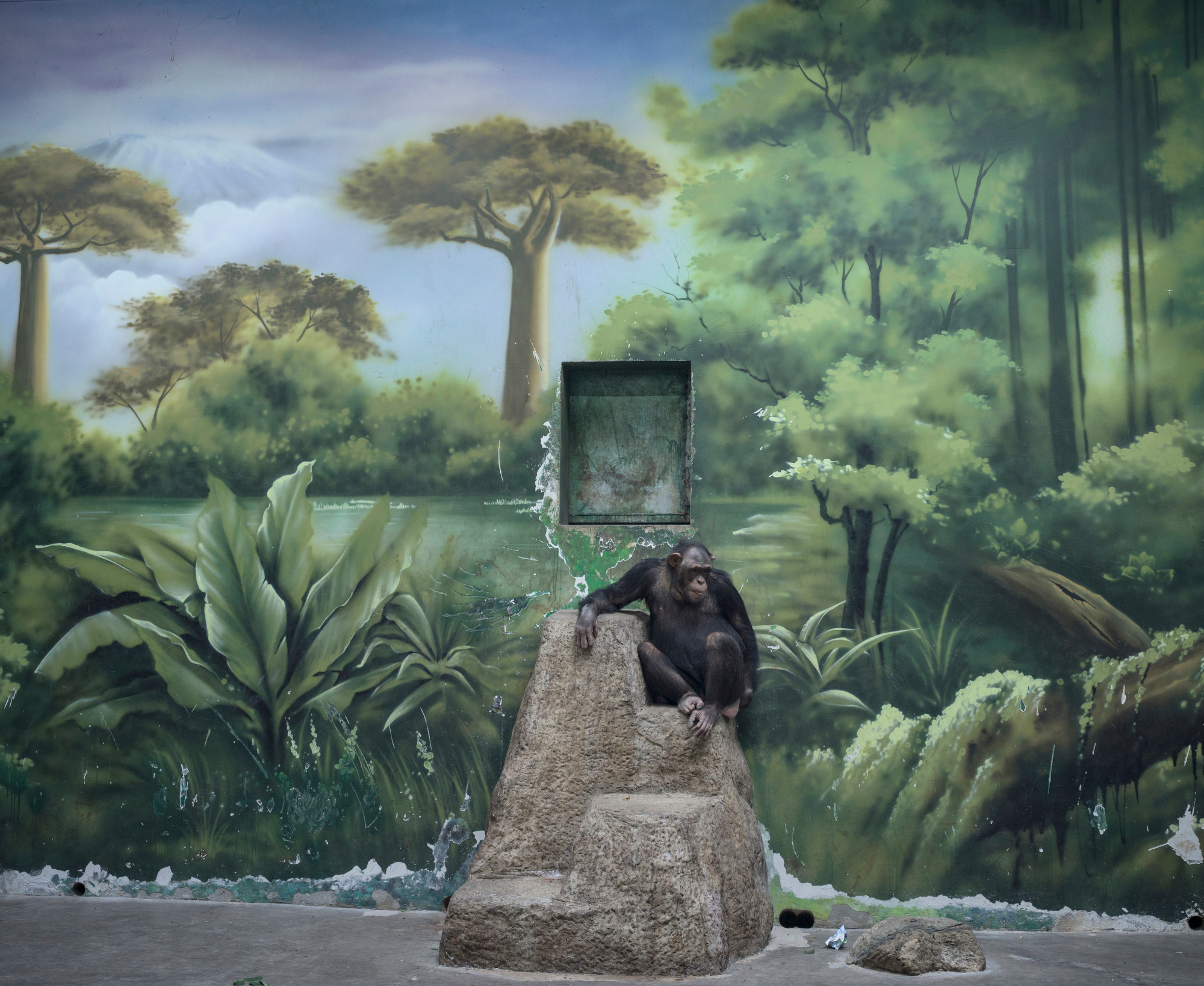The best camera bags for photographers
These are the best camera bags for all styles of photography, from backpacks to messenger bags
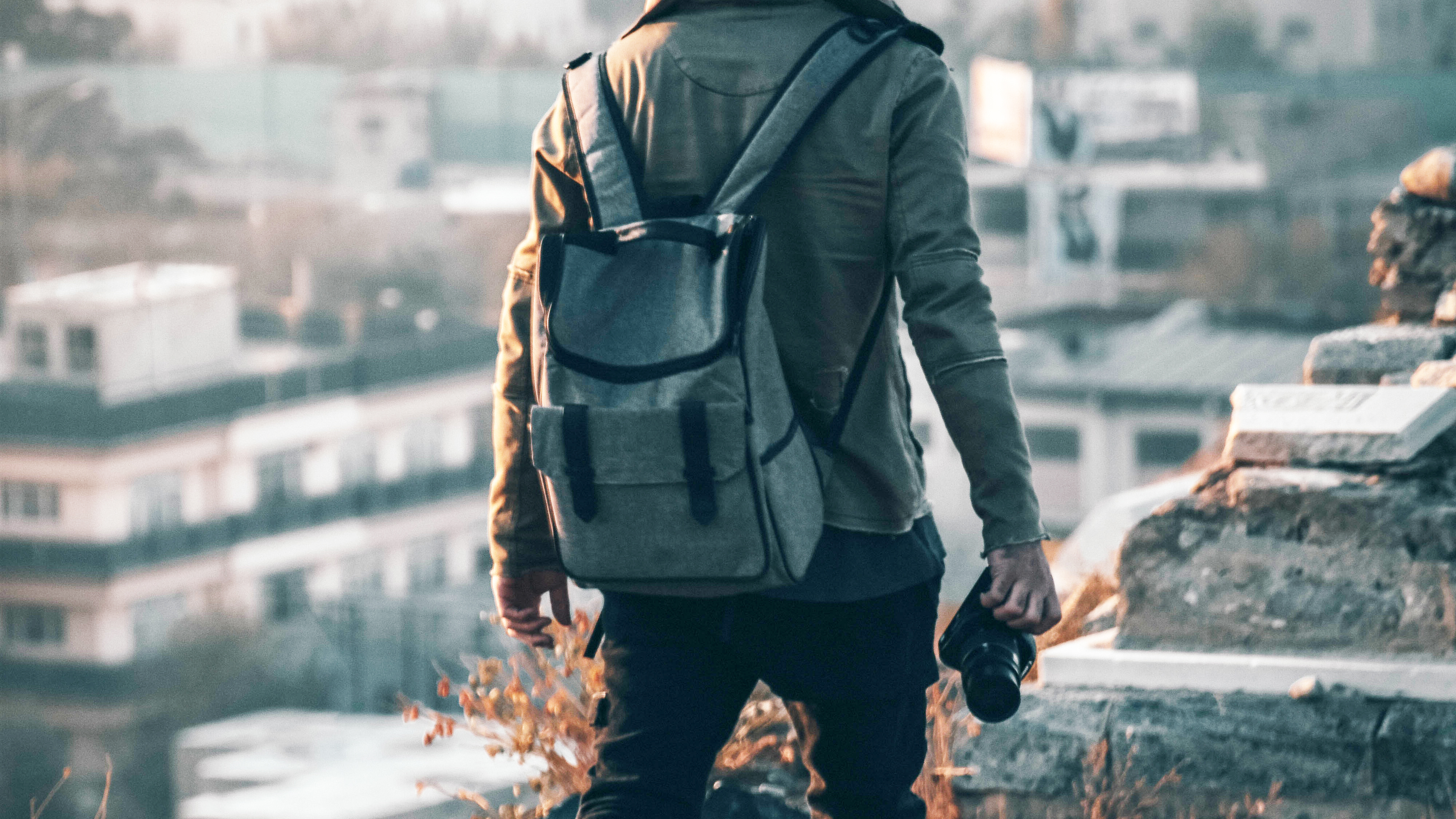
Welcome to our full guide to the best camera bags! There are loads of different types of bags for different photographers and videographers. From single-camera holsters and slim sling bags to heavy-duty camera backpacks, there's something to fit every camera setup you can imagine – the trick is finding the right one for you!
We've aimed to include a broad selection of types in this guide. These are all dedicated camera bags rather than just being generic bags, meaning they have specialised internal padding and dividers for storing camera kit, and in many cases useful extra photo-friendly features like a tripod holder. For more on how to choose the right bag for you, check out our guide to choosing the best camera bag at the bottom of this page.
If you want more of a specific type of bag, we also have dedicated guides to the best camera backpacks and the best camera sling bags. Otherwise, read on to see our picks of the top ten best camera bags we've tested.
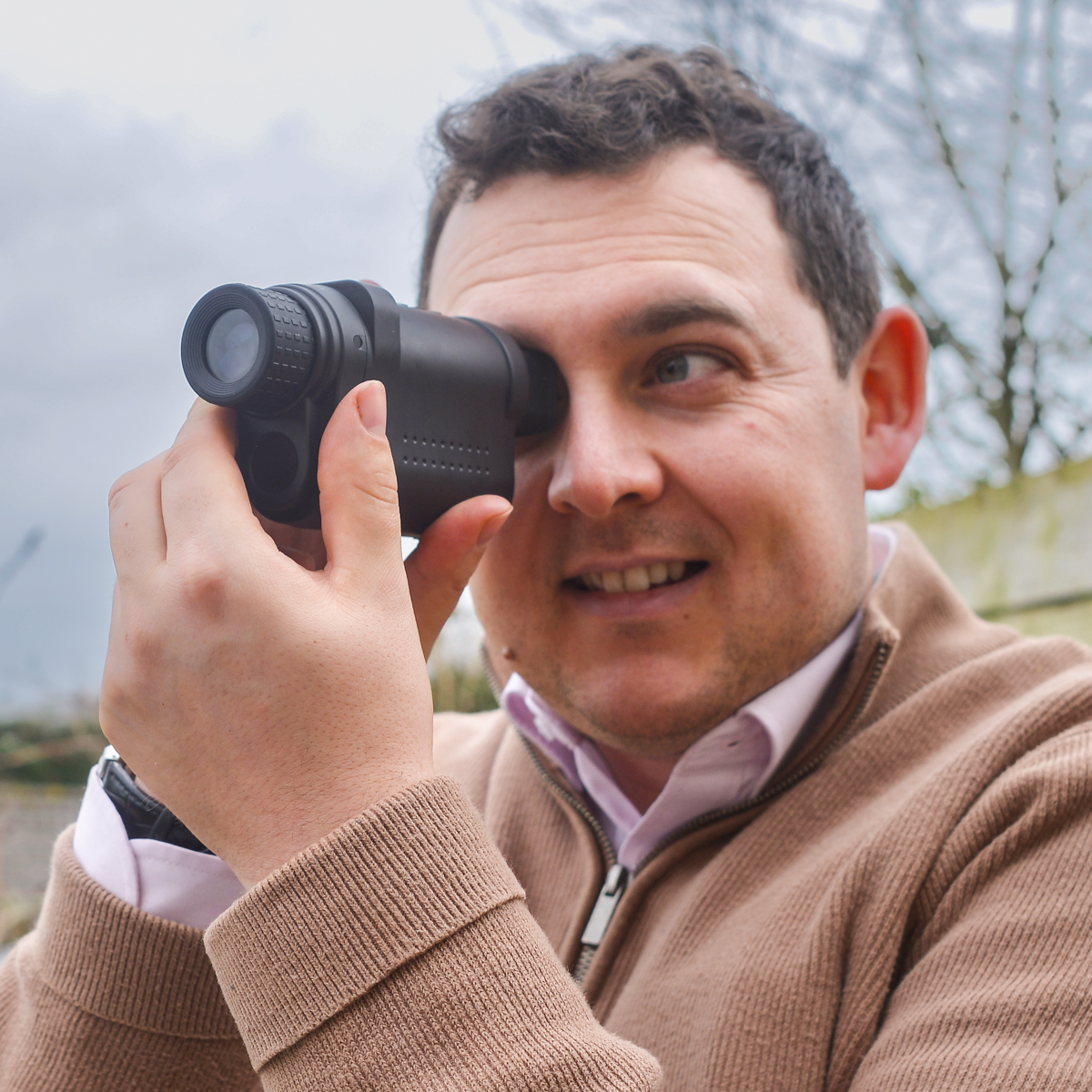
For nearly two decades Sebastian's work has been published internationally. Originally specializing in Equestrianism, his photos have been used by The Fédération Equestre Internationale (FEI), The Jockey Club, Horse & Hound, and many more. As well as being a pro sports photographer he is also a big country sportsman who can be often found in or around the shooting field, sailing on the open sea, or taking part in other country pursuits, so the best camera bag for the situation is very important to him.
The Quick List
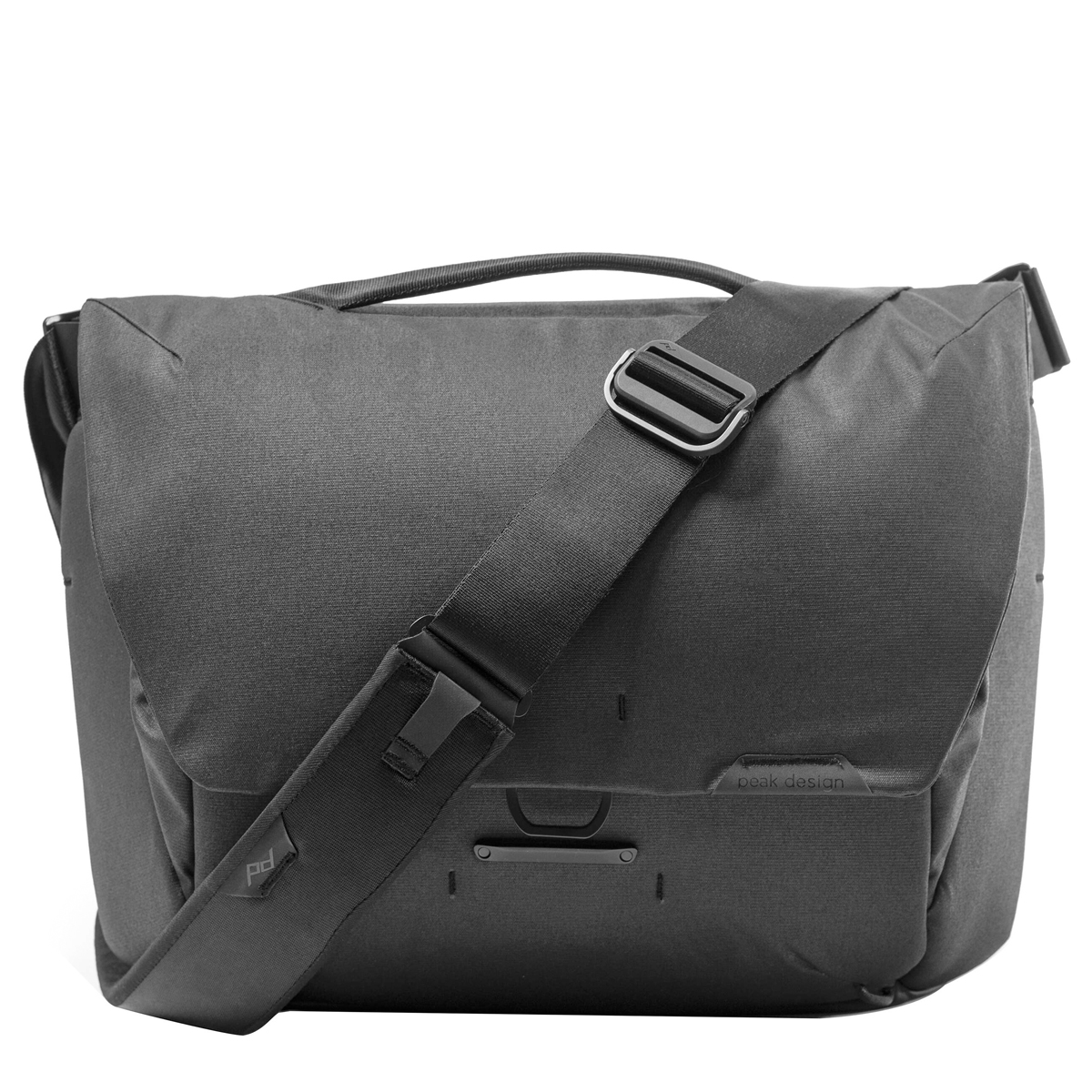
We love this bag: it looks good, has plenty of space, and offers enough customization to suit pretty much any camera system. Read more below…
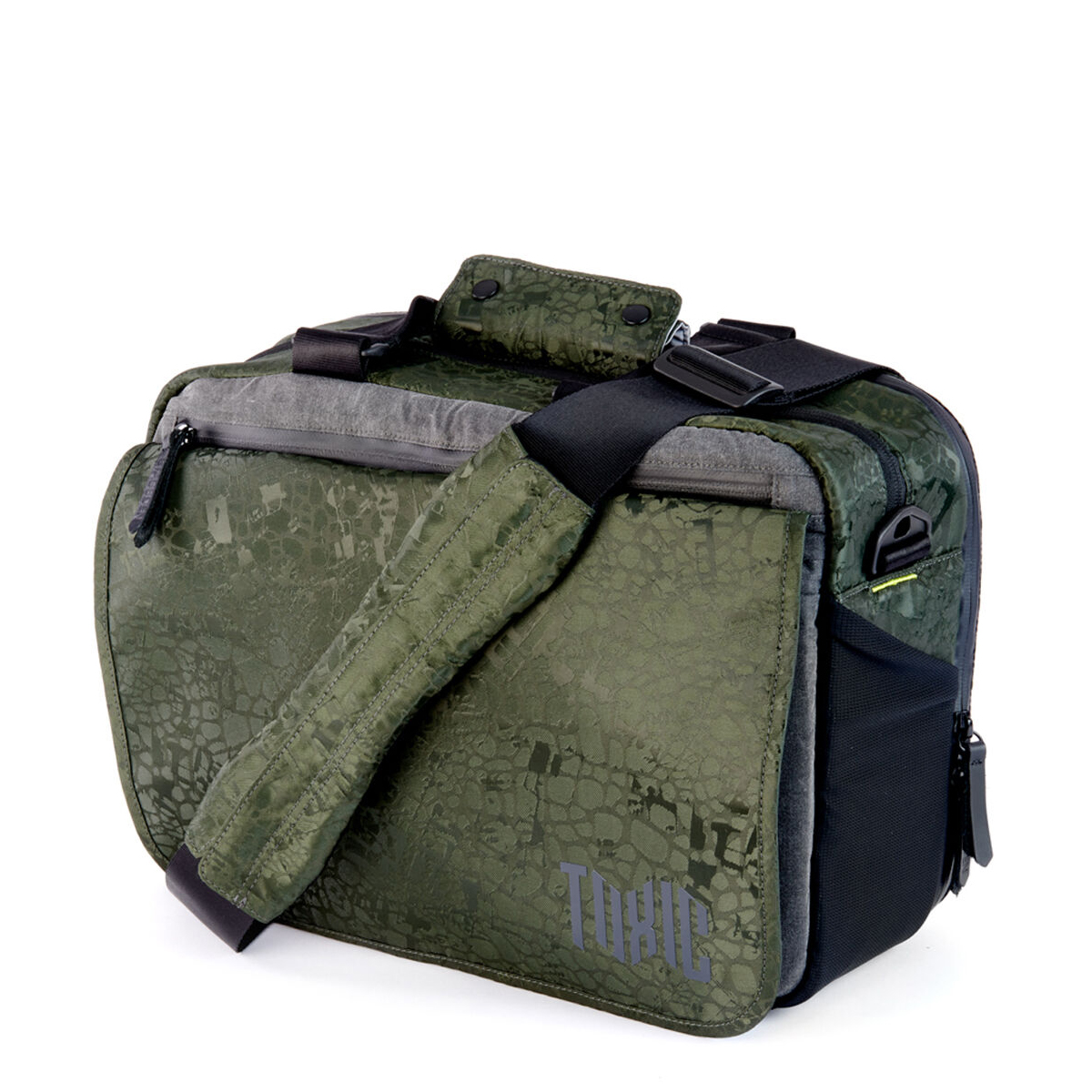
Available in four colors and nicely made, this stylish option can function as either a shoulder bag or a sling bag – you choose. Read more below…
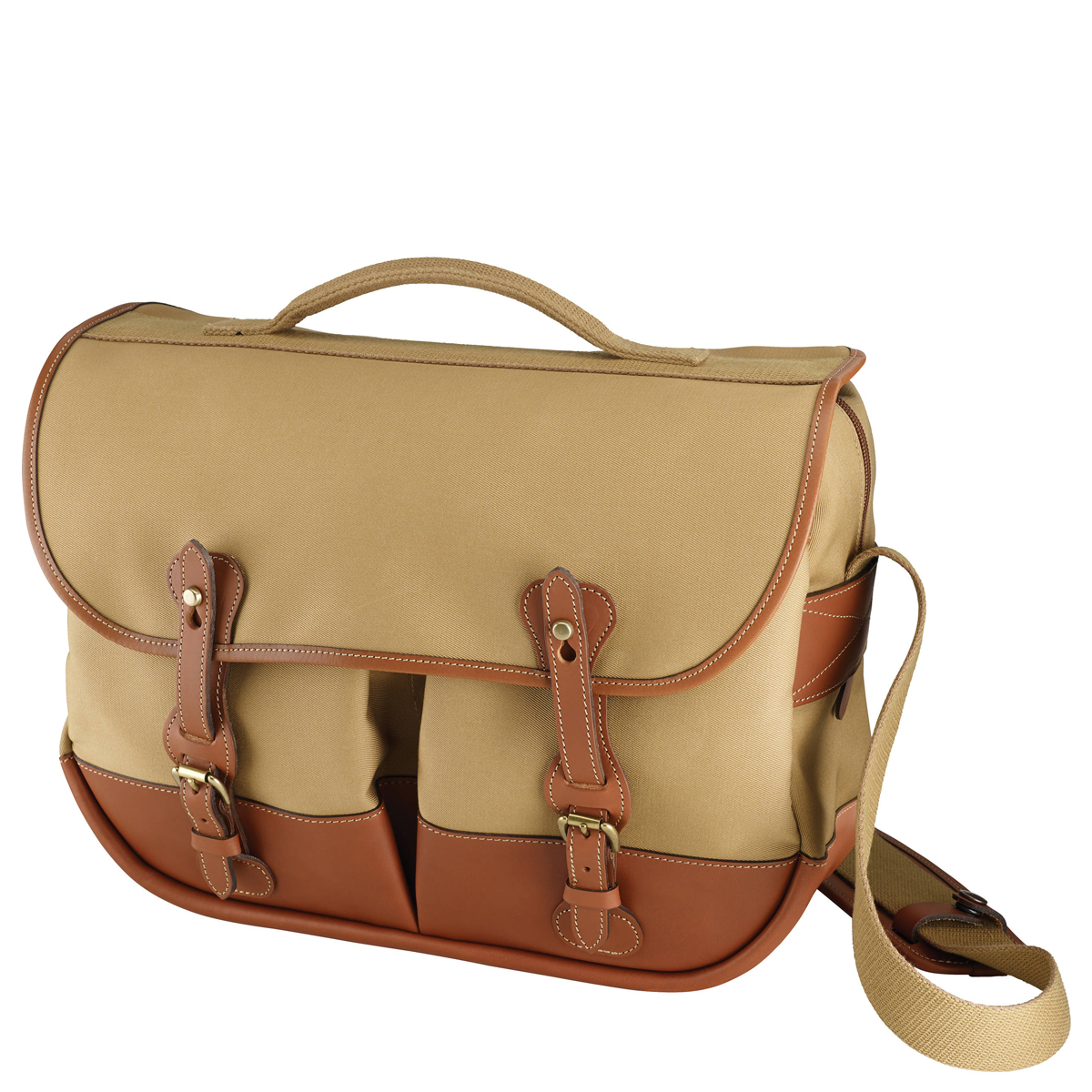
This lovely item costs so much you might hesitate to even take it out, but it offers plenty of convenience alongside good looks. Read more below…
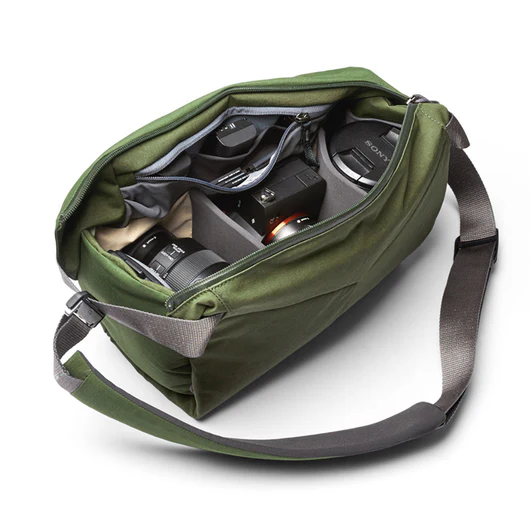 Best for street
Best for street
Sleek and minimalist, this shoulder bag is ideal for street photographers who want something simple. Read more below
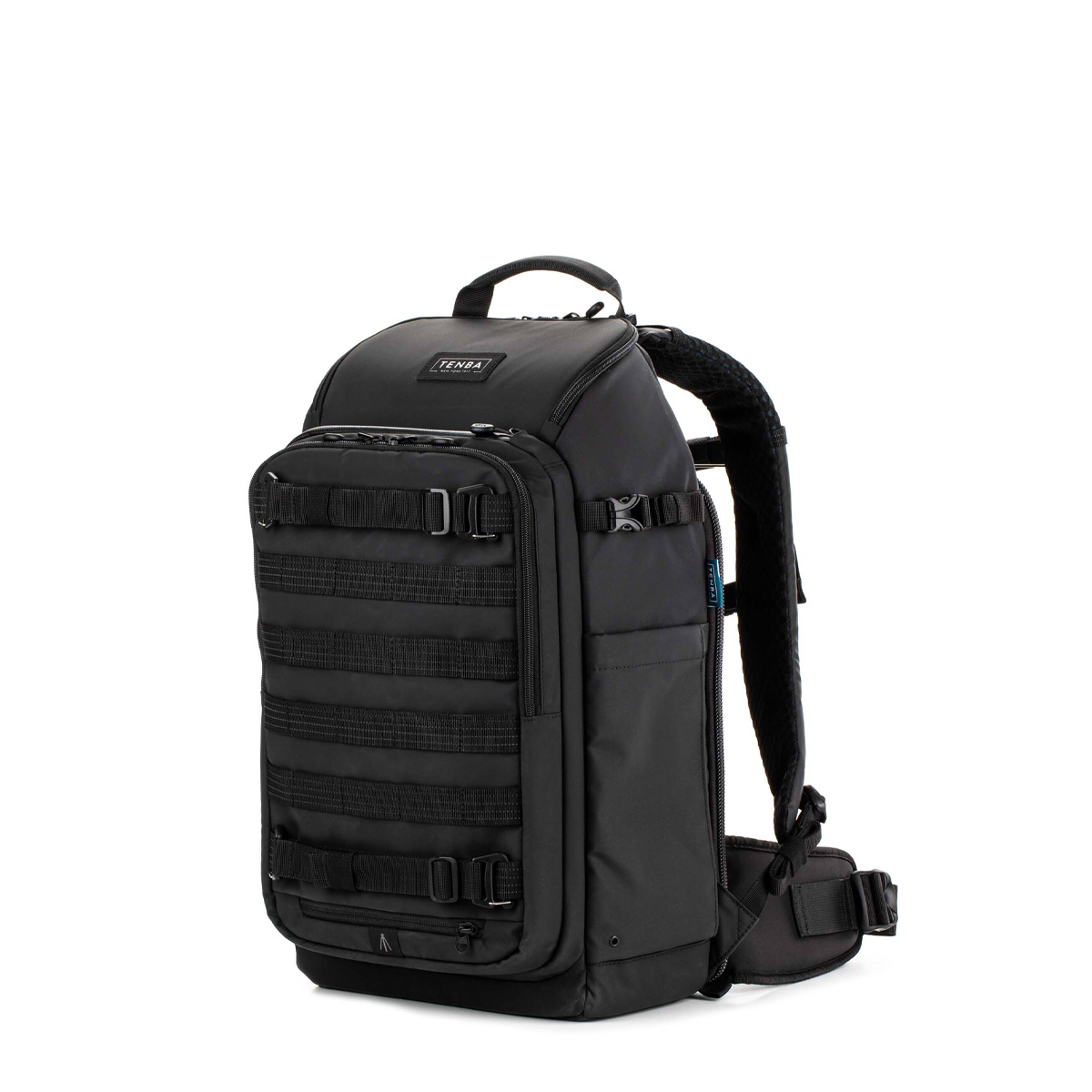
This is what most people think of when they imagine a camera backpack, with comfortable straps, a versatile layout and space to spare. Read more below…
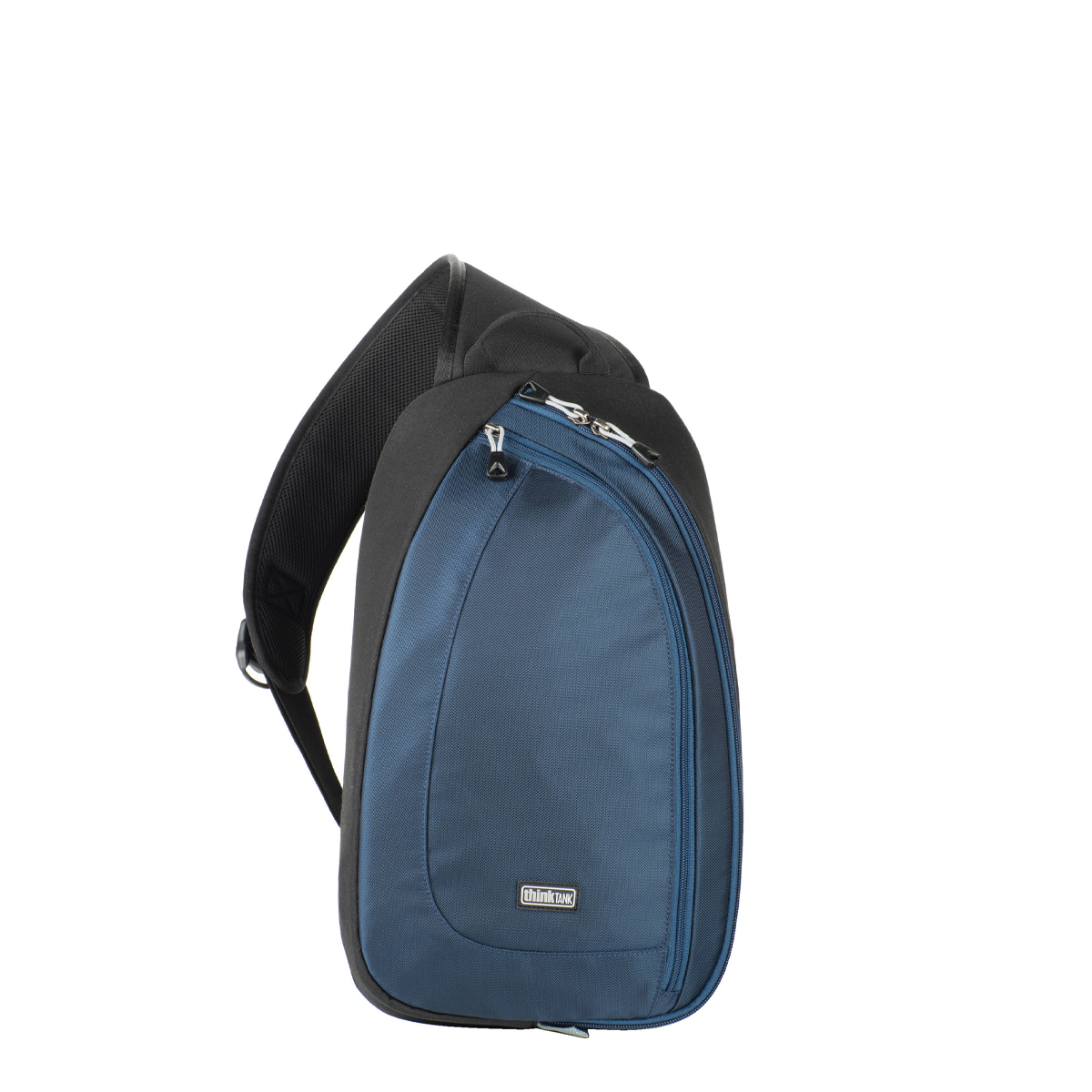
Simple but smart, this sling bag enables you to bring out your camera and take a shot without having to take the entire bag off first. Read more below…
View the full list ⤵
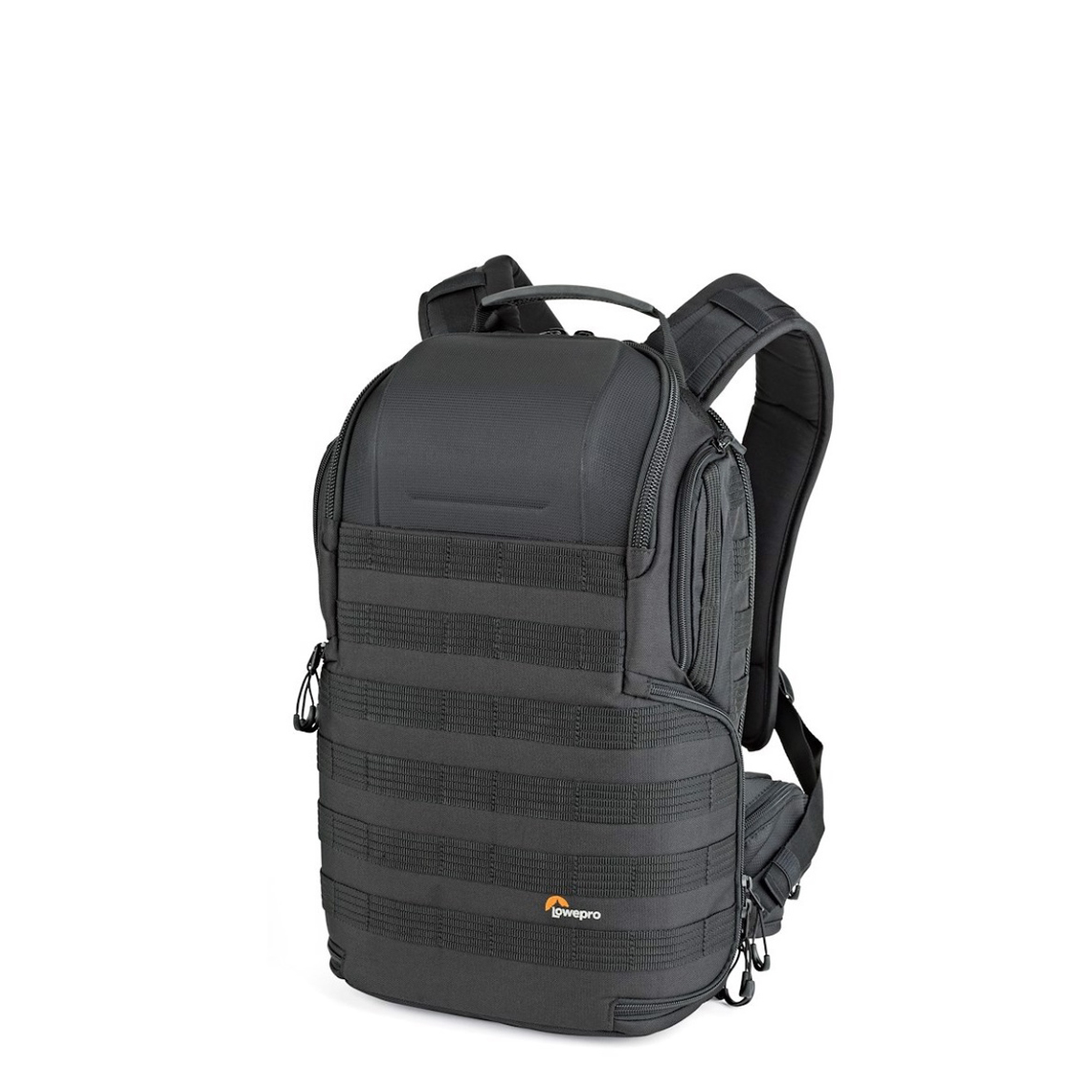
This clever backpack system enables you to fix extra modules to the front any time you need to carry additional gear with you. Read more below…
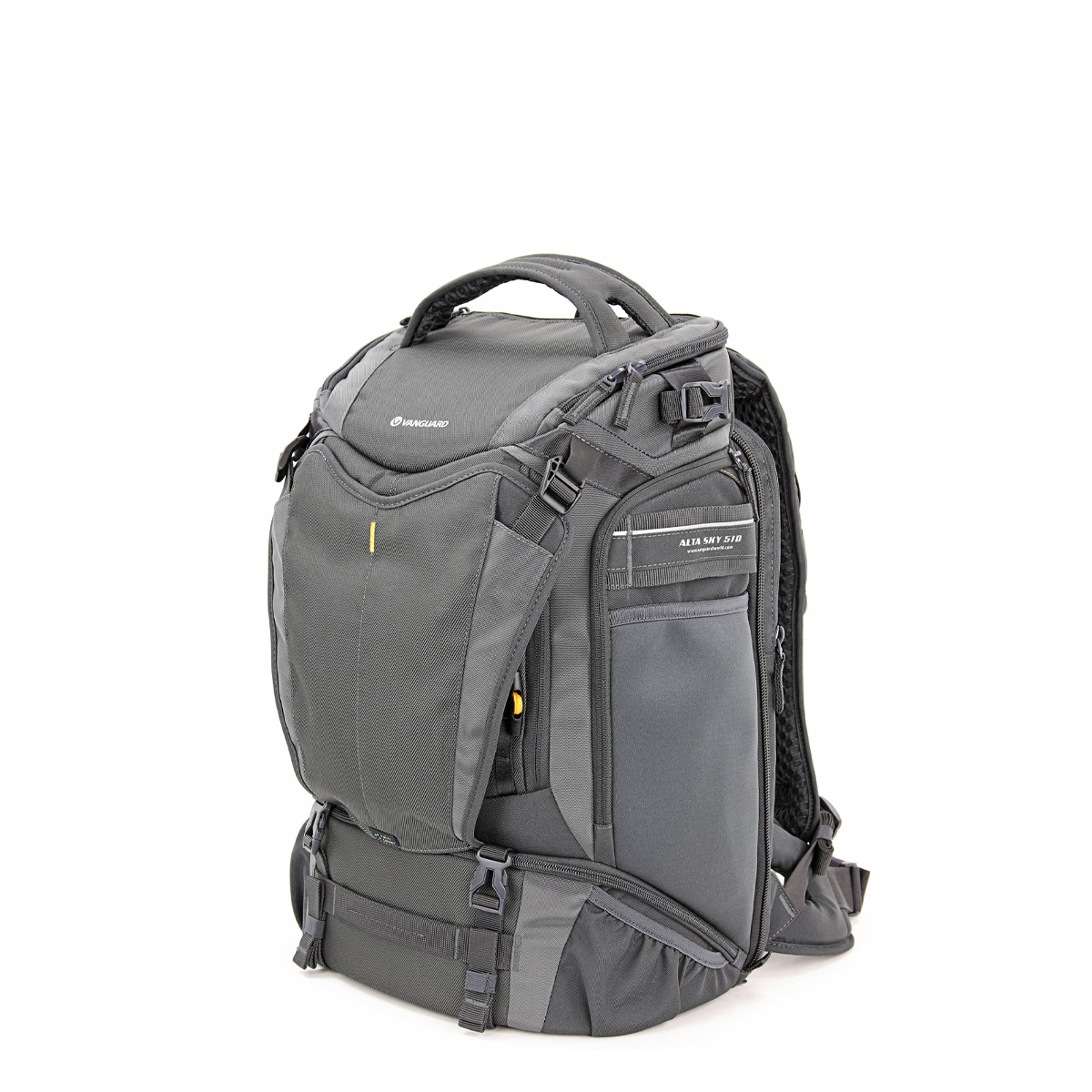
Photographers with longer lenses or the need to pack loads of gear will appreciate the room and robustness this backpack provides. Read more below…
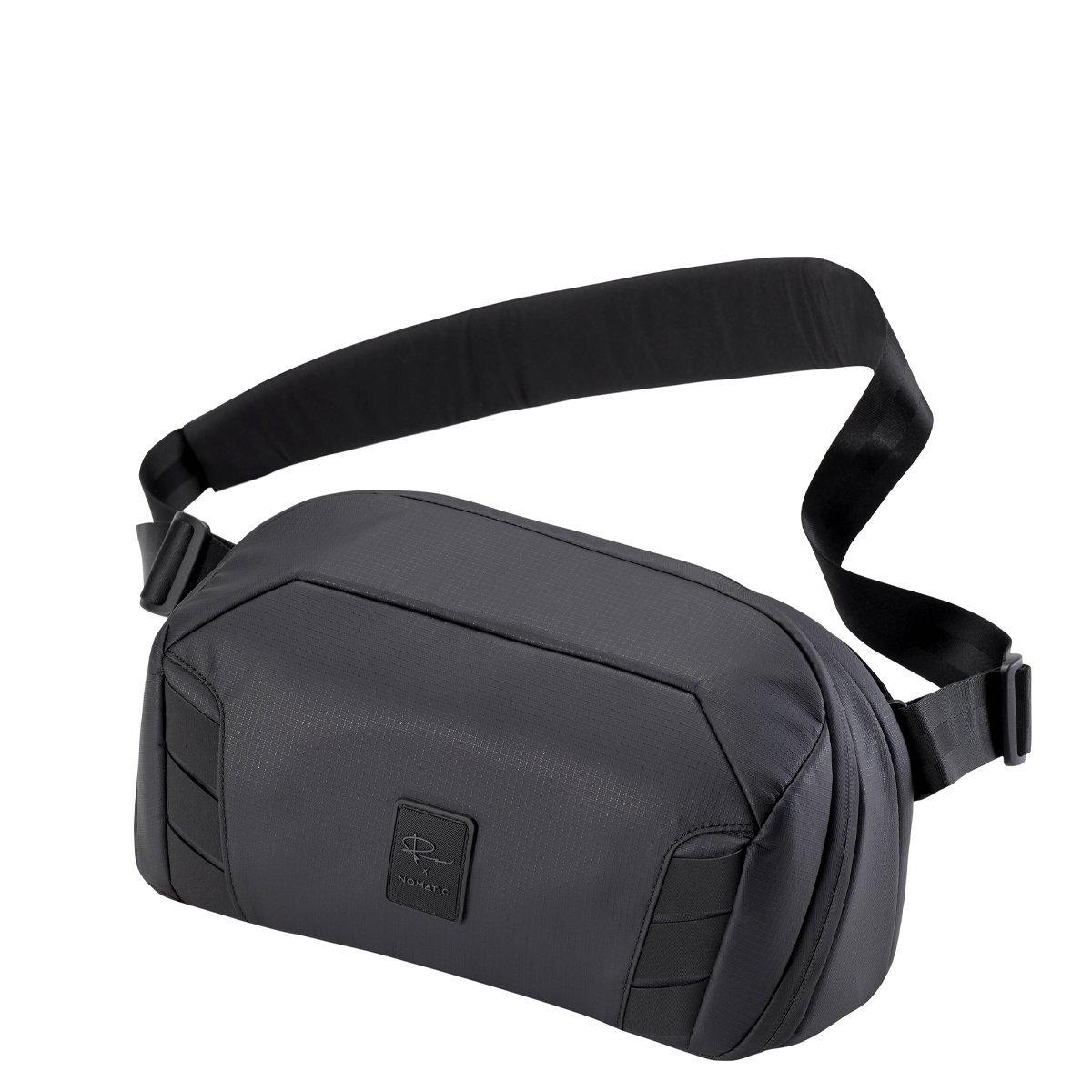
Ideal for lightweight setups, this sling bag can be worn front or back, with lots of pockets and dividers to keep things organized. Read more below…
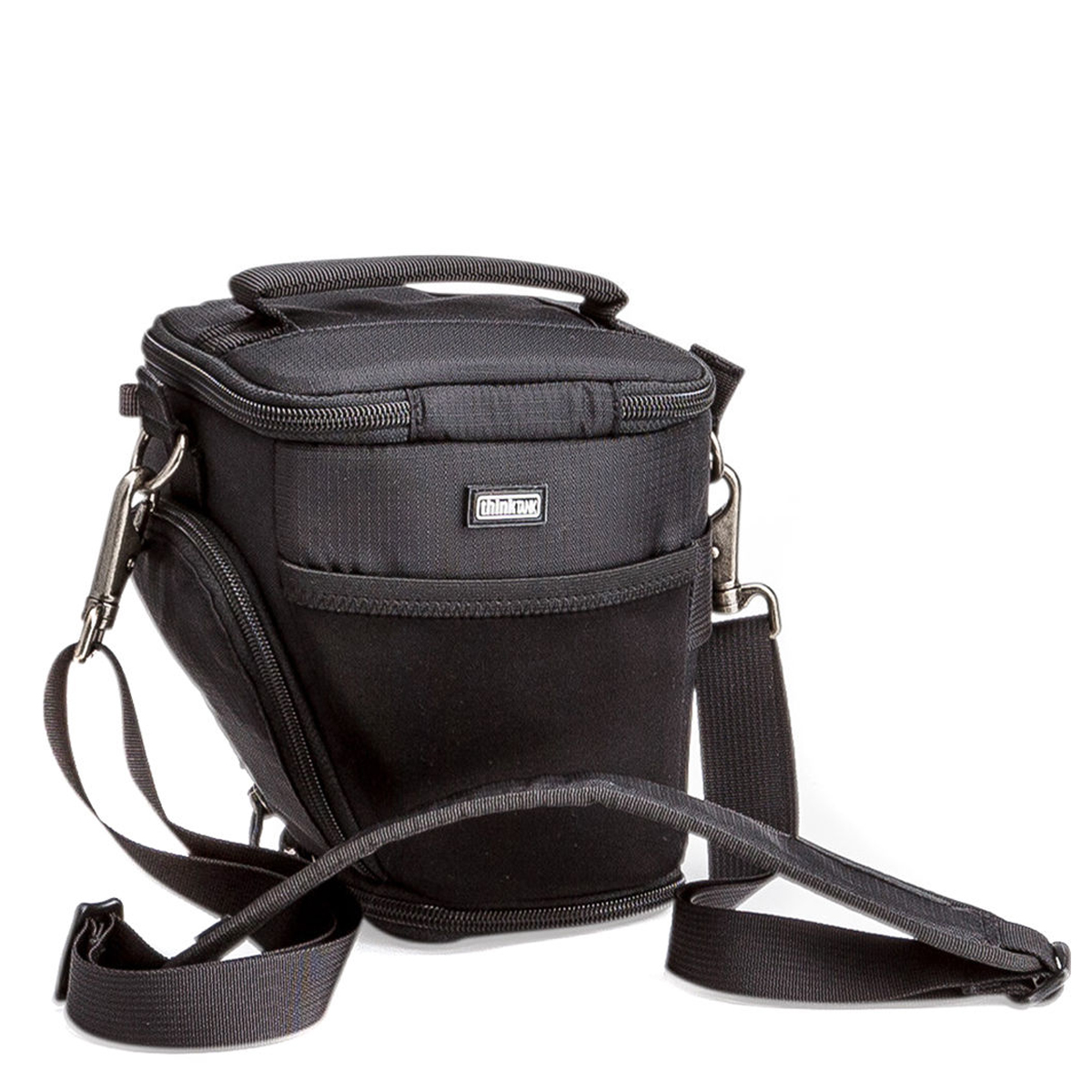
This holster bag is a nice, compact size – but if you need to bring a telephoto lens, just undo a zip and you can extend the height. Read more below…
Best camera bags
Why you can trust Digital Camera World
Best shoulder bag overall
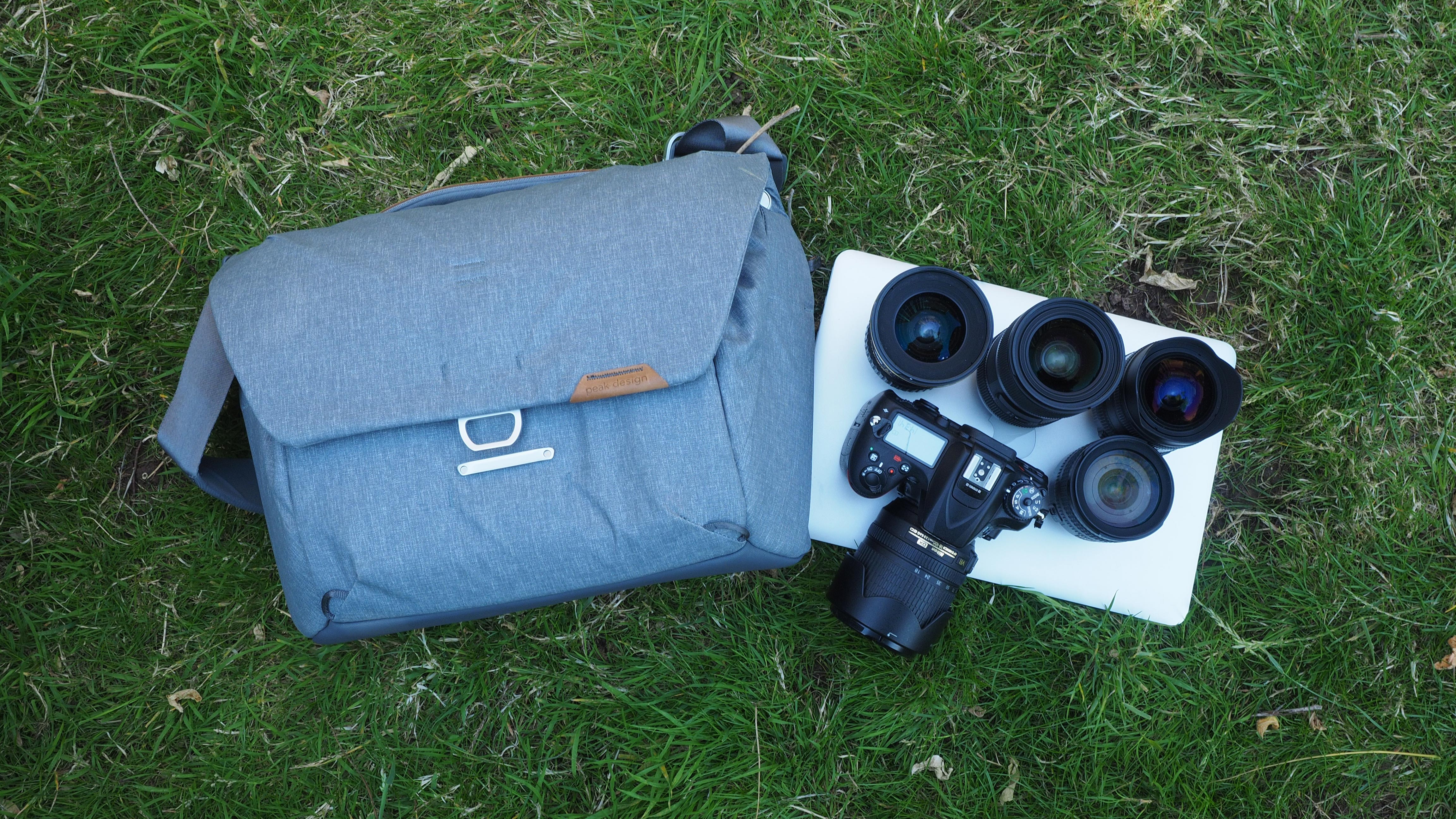
Specifications
Reasons to buy
Reasons to avoid
We love the Peak Design Everyday Messenger bag; it's arguably the archetypal camera bag. With a blend of simple but chic styling, loads of internal space and adjustable dividers to manage that space, the Everyday Messenger 13 V2 is a bag that the vast majority of photographers can get many years of use out of.
Peak Design’s FlexFold dividers allow you to customize the interior to suit your setup, building secure and padded slots for your cameras and lenses. It works well with most configurations; a small camera might take more fiddling to ensure it doesn't bounce around, but it's perfectly doable. There's a sleeve for a 13-inch laptop and plenty of pockets for extra items. It’s available in ash or black.
Read more: Peak Design Everyday Messenger 13 V2 review
Most versatile shoulder bag
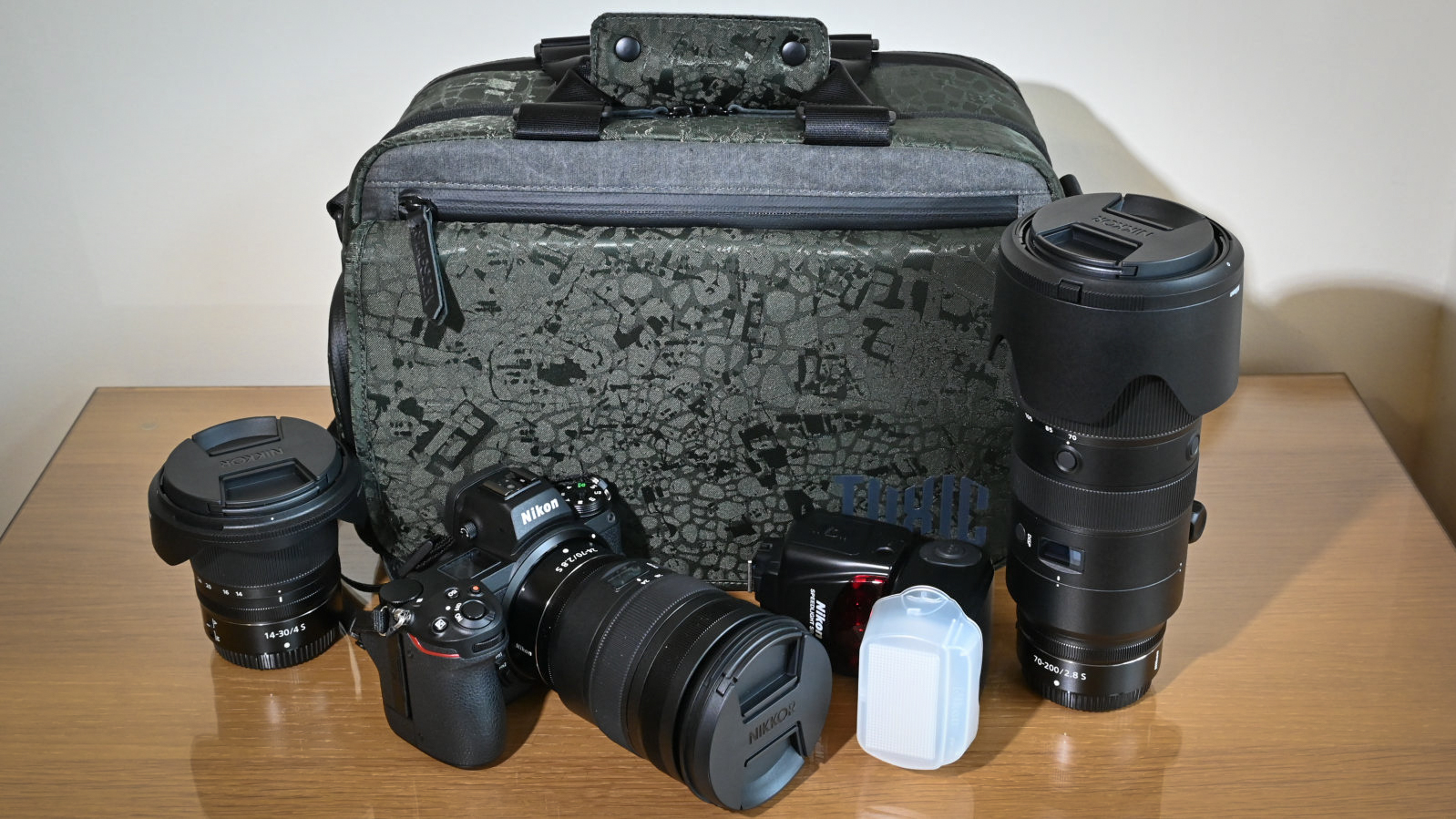
Specifications
Reasons to buy
Reasons to avoid
With the provision of a detachable carrying strap and two sets of fastening loops, the Morally Toxic Wraith can function as either a shoulder bag or a shoulder or sling bag, according to your needs on the day. Your color choice goes beyond only black into onyx, emerald or sapphire, and the bag design has several innovative touches, along with superior build quality. It’s a terrific and surprisingly affordable way to carry your photography essentials in style.
Read more: Morally Toxic Wraith review
Best luxury shoulder bag
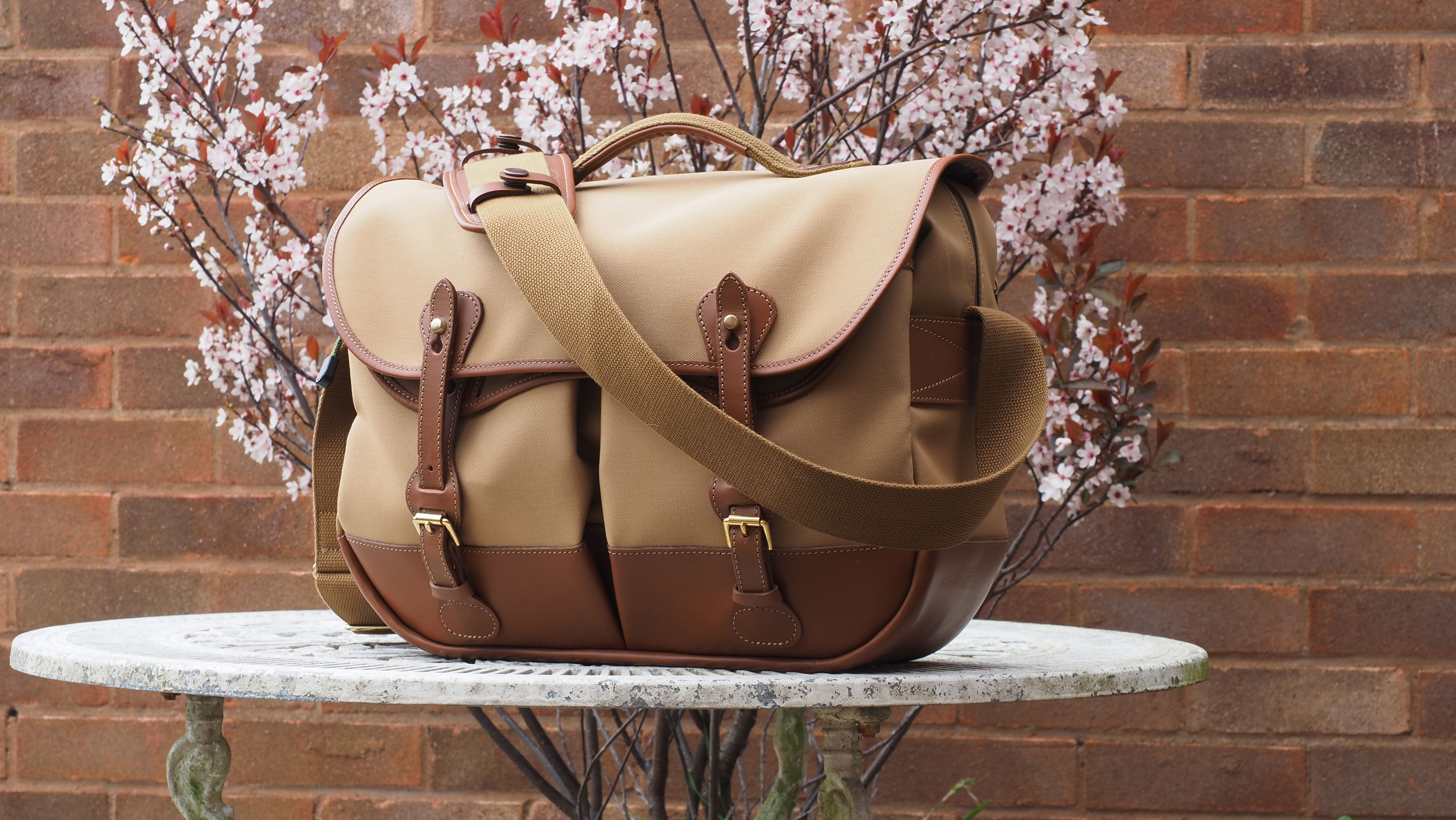
Specifications
Reasons to buy
Reasons to avoid
Impeccably made, the Billingham Eventer MKII has a traditional design that we think is lovely to look at. It’s convenient for carrying and for stowing away, although you may have to double-stack some of your gear, especially if you own longer lenses. While we were using a sample bag, we also missed the smaller pockets and areas for cables and cards.
Its price and functional limitations take it out of the realm of practicality towards sheer indulgence – but sometimes, you just have to treat yourself...
Read more: Billingham Eventer MKII full review
Best street photography bag
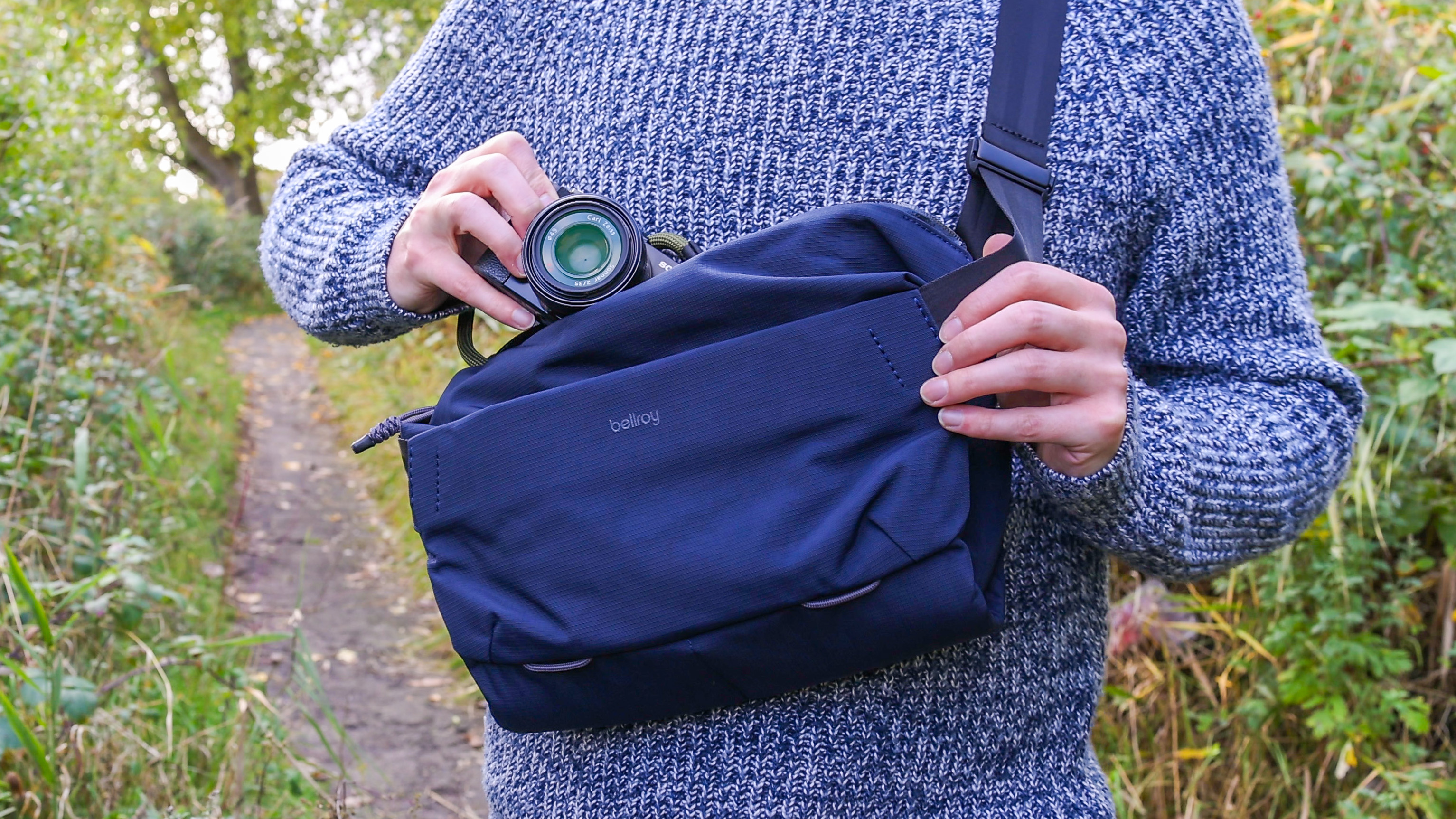
Specifications
Reasons to buy
Reasons to avoid
This stylish sling bag has proven particular popular among YouTubers and other reviewers, being described as one of the best bags you can buy for street photography. Naturally, we had to give it a try for ourselves – and we came away impressed. The Bellroy Venture 10L Camera Edition is a pretty minimalist affair, with no laptop sleeve to speak of. Plus, in what some consider sacrilege for a camera bag, the internal dividers are sewn in rather than velcro, meaning the space can't be customised.
However, for street photographers in specific this makes a lot of sense, as street setups tend to be more uniform in size. You have three areas in the 10L internal space to make use of, and they're more malleable and adaptable than they appear, as the memory foam can easily be bent and compressed to suit the specific contours of your kit.
We did feel in our review that the bag could benefit from a dedicated water bottle holder. Otherwise, we found it to be a comfortable and versatile bag, robustly made to high standards of quality. If you're looking for a photo bag for street shoots and city breaks, this is your best buy.
Read more: Bellroy Venture 10L Camera Edition review
Best everyday backpack
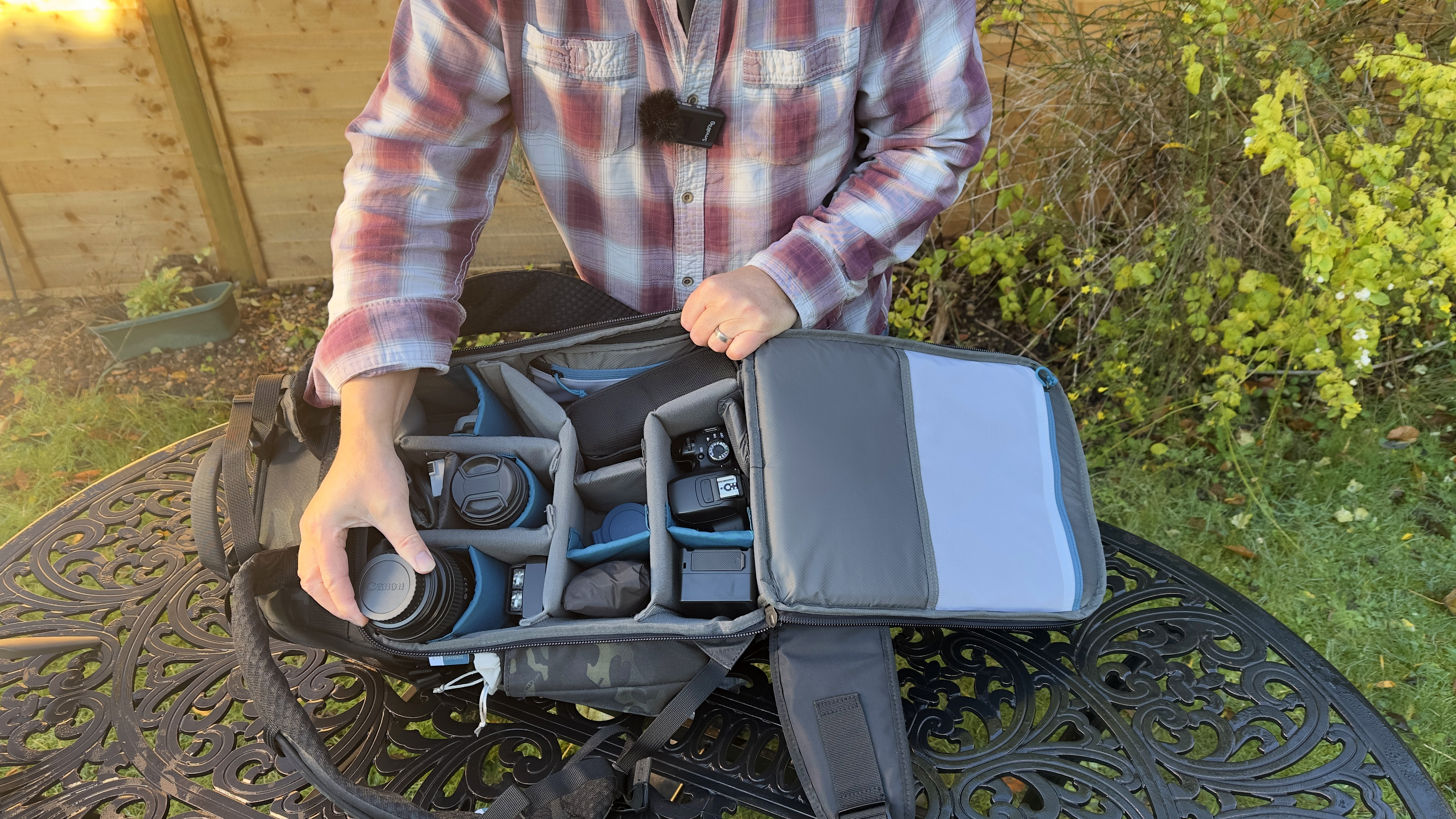
Specifications
Reasons to buy
Reasons to avoid
The Tenba Axis V2 20L backpack is an archetypal design, providing pretty much everything you’d expect in a camera backpack. There’s ample room for your camera, lenses and accessories, with a multi-compartment layout allowing easy access to anything you need, plus a space for a 14-inch laptop. It also feels comfortable and balanaced while you carry it around, with well-padded straps and breathable back support.
When we had a bag for testing, it was able to comfortably accommodate a DSLR camera body, a battery grip, three lenses, a flashgun and an infrared trigger unit. For this particular size, we found our telephoto zoom was too tall, but 24L and 32L sizes are also available for more specialist gear requirements. You can also scale down to 16L or 18L if you have less to carry. There’s a MultiCam camouflage option in addition to black.
Read more: Tenba Axis V2 20L review
Best modular backpack system

Specifications
Reasons to buy
Reasons to avoid
Have you never got the right bag for the job? Although the idea of a modular system, where you can add or remove sections to suit your needs, might sound like overkill, it’s actually great value for money because you don’t need to buy (and store) multiple backpacks for different situations: you can just add modules when you need to take more gear with you, then remove the modules when you want to travel light.
This is all achieved through a set of loops through which you can attach accessories such as a neoprene flash holder, a tripod toe-cup and straps, or a phone case. Just add what you need. Inside the main backpack, there are Velcro dividers you can configure or remove entirely, and there’s a separate compartment for a 13-inch laptop.
Read more: Lowepro ProTactic BP 350 AW II full review
Best rugged backpack
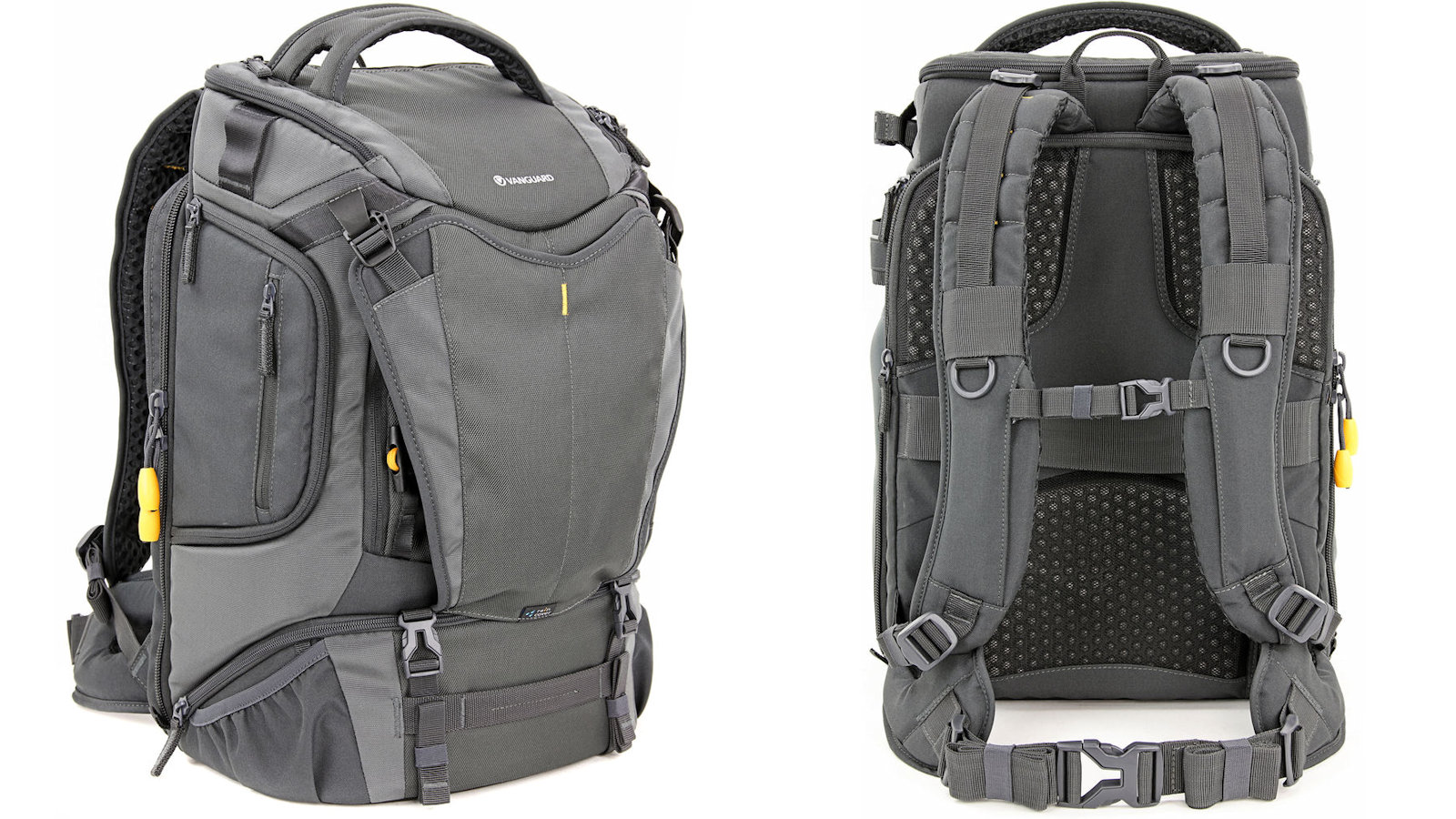
Specifications
Reasons to buy
Reasons to avoid
The Vanguard Alta Sky 51D is designed to carry camera gear, a drone, or a combination of both. The main compartment has room for a pro DSLR with an attached 70-200mm lens and up to four lenses around it. The padding is good, and there’s a hatch on one side for mobile access, although openings on both sides would be better.
Primary access to this area is via a large rear panel that contains a slot for a 15-inch laptop. The flap opens wide, but you’ll need to bend the shoulder straps out of the way for unobstructed camera access. Comfort is assured by good-sized hip pads, thick back padding and generous shoulder straps.
Read more: Vanguard Alta SKY 51D full review
Best large sling bag
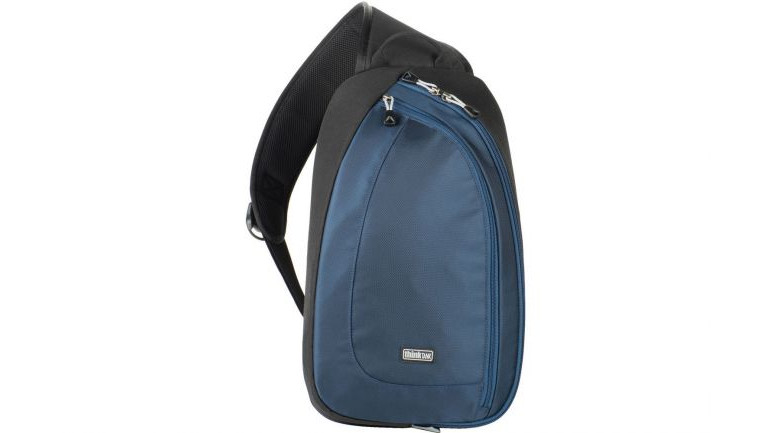
8. Think Tank TurnStyle 20 V2.0
Specifications
Reasons to buy
Reasons to avoid
Available in three sizes and two color options (blue/indigo and charcoal), the ‘20’ is the largest of Think Tank’s TurnStyle camera bags. With one shoulder strap rather than the usual two, it’s worn as a sling bag.
The design enables you to can swivel the bag around on its strap to fetch our your camera and or an accessory without having to take the bag off and set it down. The downside of this design is that it doesn’t spread the load as well as a typical backpack would.
There’s enough room in the TurnStyle 20 for a camera and four lenses or other accessories. The TurnStyle 10 takes one less lens, and the TurnStyle 5 is better suited to mirrorless camera setups. There’s also a pocket for a tablet computer like an iPad, and a front compartment. Even the largest 20 model is refreshingly light to carry, but feels well-made enough to last.
Best small sling bag
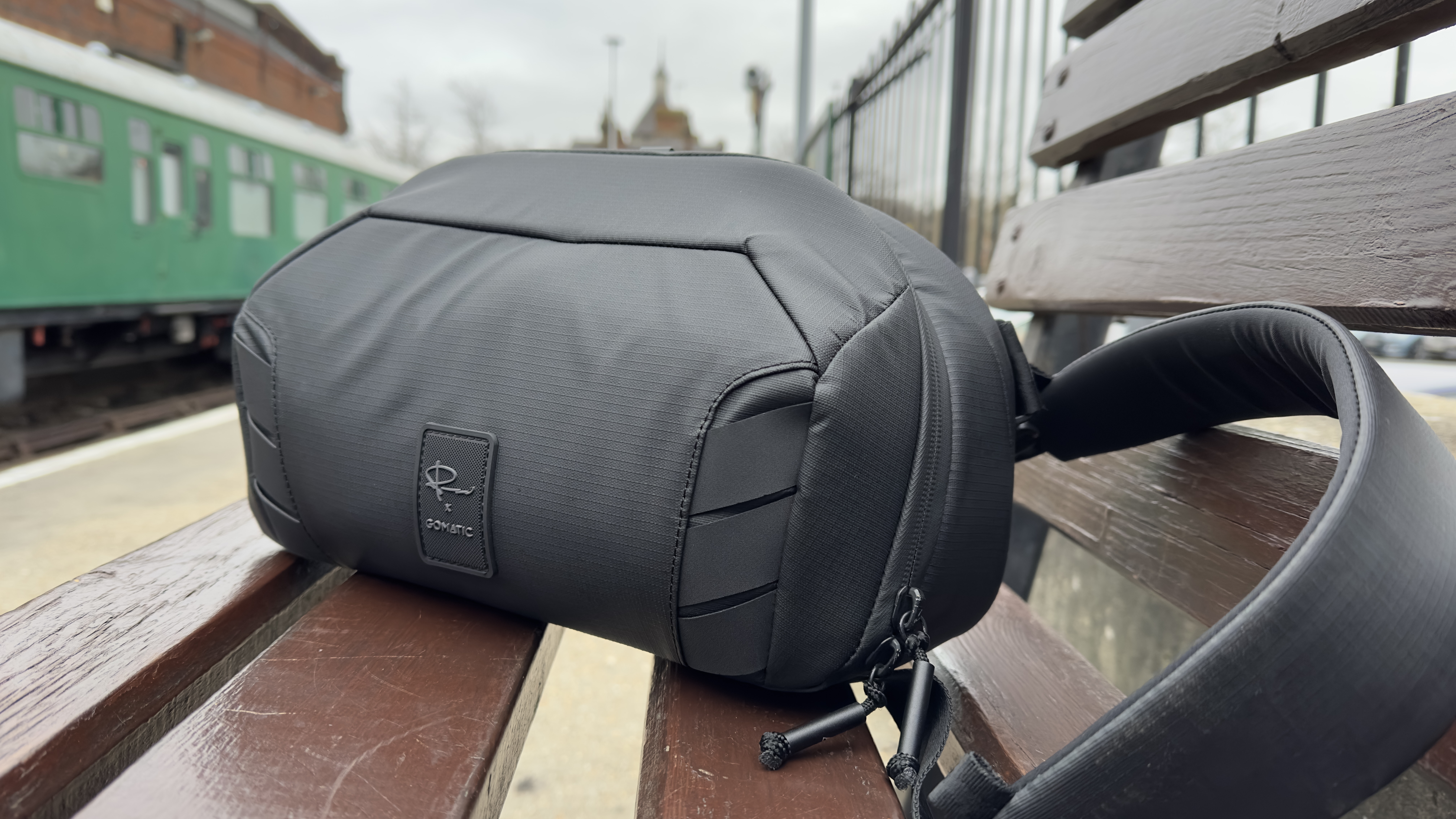
Specifications
Reasons to buy
Reasons to avoid
Named after Peter McKinnon, the McKinnon 8L Camera Sling is made for photographers who use a small DSLR or mirrorless camera, and it’s ideal for smartphone photographers and videographers who need to bring extra gear with them. The design provides plenty of pockets and dividers to help you to organize your stuff.
A single padded strap enables you to carry the McKinnon 8L on your back, or to keep it close to your chest if you’re in a crowded space, and the durable material is water-resistant. By the way, Gomatic is the Europe-wide brand name used by Nomatic, so you might have a different logo on the bag depending on where you buy it, but the bag is the same.
Read more: Nomatic/Gomatic McKinnon Camera Sling 8L review
Best holster bag
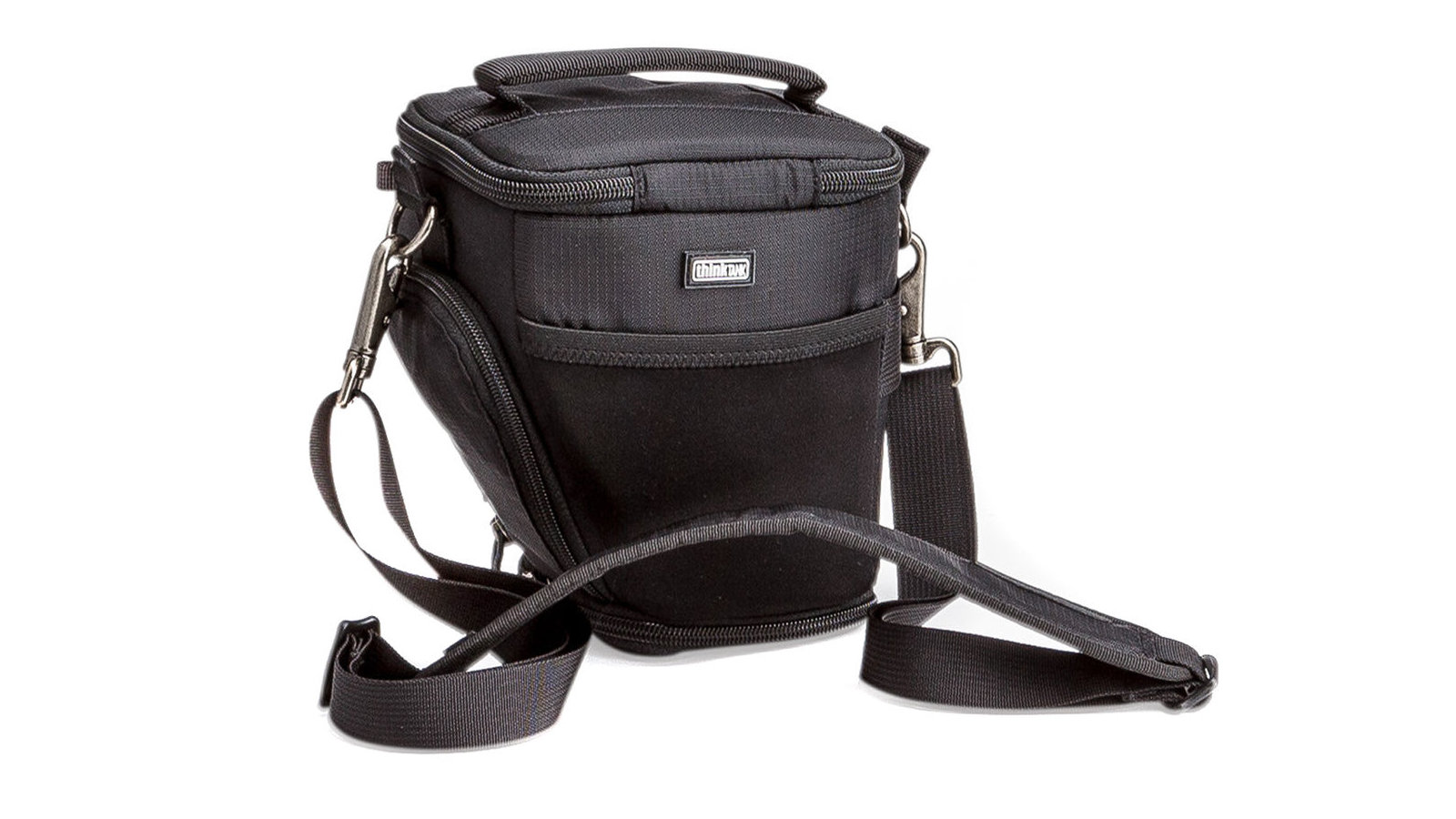

10. Think Tank Digital Holster 10 V2.0
Specifications
Reasons to buy
Reasons to avoid
This design from Think Tank has a clever hidden feature. The ‘10’ model has standard internal dimensions of 160x100x152mm, suitable for a mirrorless camera or small DSLR, plus a standard zoom or smaller lens. But there’s a zip you can open to extend the bottom (similar to carry-on luggage with an extend option) which takes the internal height to 210mm – and now you’veo got space for a telephoto zoom. Removable partitions add to the flexibility of the main compartment, while additional pockets handle your accessories.
You can choose between a removable strap, a carry handle or a belt loop while you’re on the move, and there’s an external rain cover provided. If the 10 size doesn’t sound right for your equipment needs, there are six further size options.
How to choose the best camera bag
What are the benefits and drawbacks of a shoulder or messenger bag?
Both shoulder and messenger bags use a cross-body design, with a single strap that you take over your head and rest on the shoulder opposite the bag itself, which helps the load feel balanced. The technical distinction between shoulder and messenger bags is that the latter have shorter straps and sit higher on the body - think of a messenger on a bike.
Shoulder and messenger bags are convenient, with easy access to your camera gear, and are available in many sizes. Their main drawback is that they’re not ideal if you’re out all day or simply have a lot to carry: bearing the load on one shoulder can become tiring. But they’re great for shorter shooting assignments where you perhaps have one or two extra lenses you want to be able to access quickly.
What are the benefits and drawbacks of a camera backpack?
Backpacks have a strap for each shoulder, centering the load behind you for a comfortable feel. This means you can carry more at once, so backpacks are typically bigger than other designs. They are a great option when you plan to be outside for a long time or have a lot to carry. A typical camera backpack offers internal dividers to organize your gear and stop things from getting mixed up.
The main drawback of backpacks is access: you often have to take the backpack off and set it down to access its contents comfortably, so they don’t suit spontaneous shooting. But when you have a lot you need to take with you, this is the workhorse bag you need.
What are the benefits and drawbacks of a sling bag?
Sling bags have a single strap, like a shoulder bag, but their design makes them more comfortable to wear on your back, like a backpack. Their biggest benefit is that you can bring them to your front easily, and without taking them off, so they’re great for rapid access.
The penalty for this convenience is size: there’s a limit to how big this design can comfortatbly scale, and therefore how much you can carry. But if you just to take a camera and a couple of lenses you can bring out quickly, sling bags are well worth trying out.
What are the benefits and drawbacks of a holster bag?
A typical camera holster bag goes round your waist, perhaps clipping to your belt. They’re comfortable to wear and walk around in, to easy access to your gear, but they’re usually quite small, so don’t expect to be able to take much out with you.
How we test camera bags
The Digital Camera World team are all camera enthusiasts, and between us we have tested hundreds of different camera bags over the years – and owned a fair few of them too!
For us, a good camera bag is one that keeps your photographic gear safe and secure when not in use – but also easily accessible for when you need to take pictures. The particular requirements of a bag will depend on its type – we'd expect quicker access from a messenger bag than with a backpack, but we'd expect the backpack to store more gear.
We test our bags in real-world scenarios - accessing how much kit you can fit into each, so we can give a clear idea of which type of photographer each is best for. The design and looks of a bag can be equally important to the photographer - so we ensure we take this into account in our assessments.
Find out more about how we test and review on Digital Camera World
Get the Digital Camera World Newsletter
The best camera deals, reviews, product advice, and unmissable photography news, direct to your inbox!

For nearly two decades Sebastian's work has been published internationally. Originally specializing in Equestrianism, his visuals have been used by the leading names in the equestrian industry such as The Fédération Equestre Internationale (FEI), The Jockey Club, Horse & Hound, and many more for various advertising campaigns, books, and pre/post-event highlights.
He is a Fellow of the Royal Society of Arts, holds a Foundation Degree in Equitation Science, and holds a Master of Arts in Publishing. He is a member of Nikon NPS and has been a Nikon user since his film days using a Nikon F5. He saw the digital transition with Nikon's D series cameras and is still, to this day, the youngest member to be elected into BEWA, the British Equestrian Writers' Association.
He is familiar with and shows great interest in 35mm, medium, and large-format photography, using products by Leica, Phase One, Hasselblad, Alpa, and Sinar. Sebastian has also used many cinema cameras from Sony, RED, ARRI, and everything in between. He now spends his spare time using his trusted Leica M-E or Leica M2, shooting Street/Documentary photography as he sees it, usually in Black and White.
